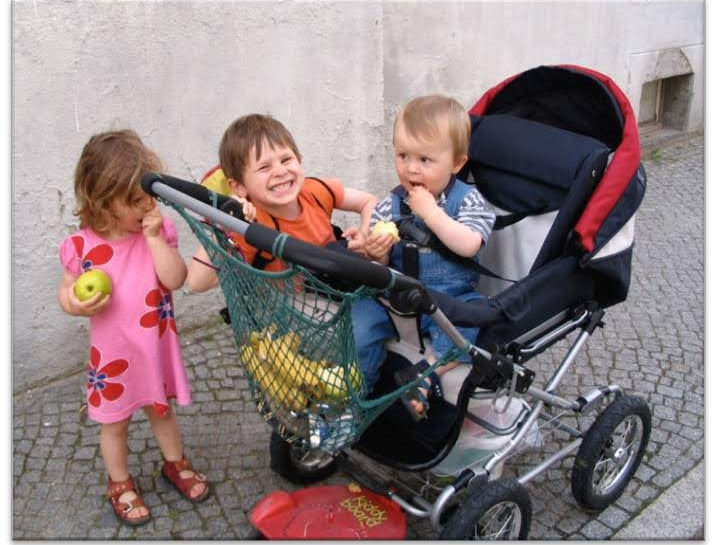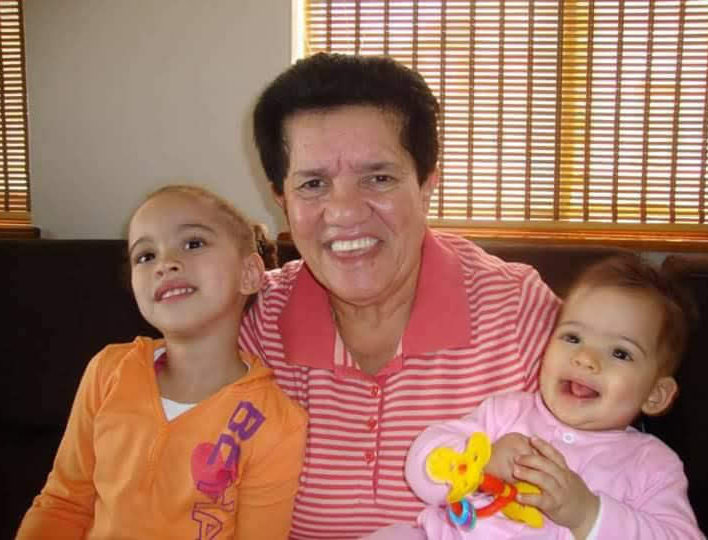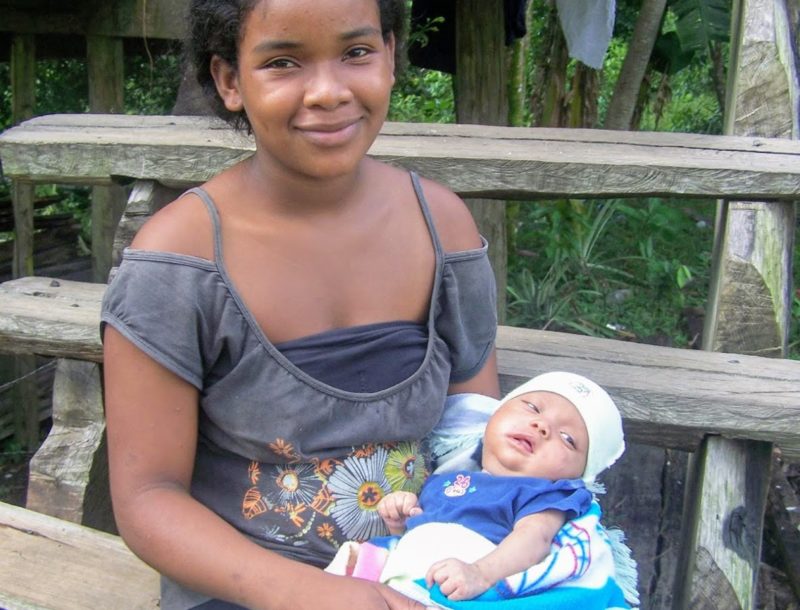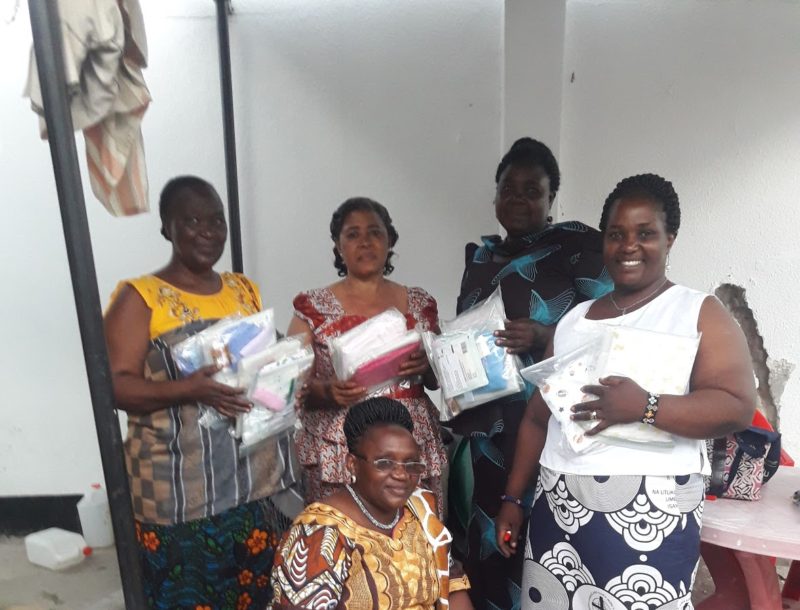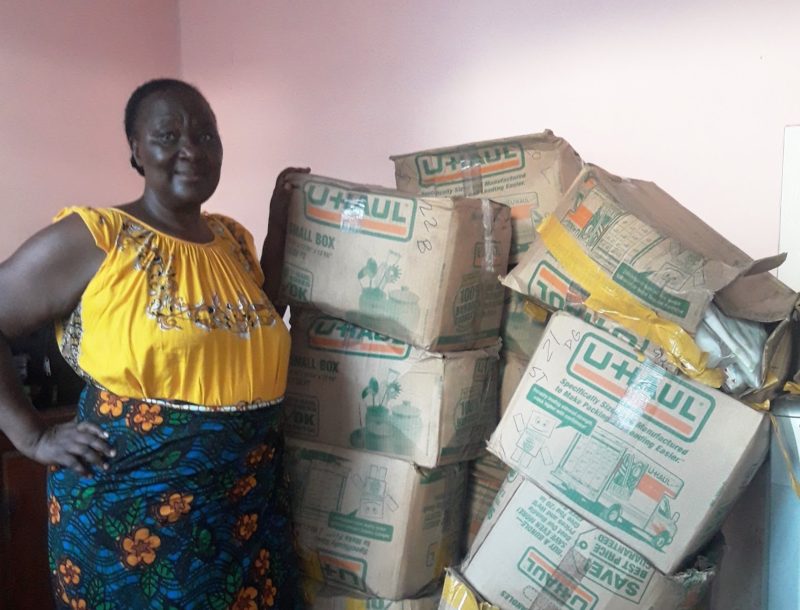Birthing Kits
What are Birthing Kits?
Every 11 seconds, a mother or newborn child somewhere in the world dies during childbirth. While much progress was made in Maternal Mortality rates between 2000 and 2017, UNICEF reports they remained very high in many countries, including Tanzania, where the majority of Moravian women live. Poor infection control practices during childbirth is a critical factor leading to life-threatening maternal and newborn sepsis.
A Clean Birth Kit or Birthing Kit is a small toolkit of items that help women have cleaner and safer birthing experiences. The kits can be used in remote areas where women cannot get to a clinic or hospital to deliver their babies, or in clinics with inadequate medical supplies. Birthing Kits are small enough to fit in a one-gallon bag so they can be easily distributed, stored, and pulled out for use when needed. Ideally, midwives and others who assist with home births receive training in using the kits when they receive them. Please take a minute to watch the short video below that shows the journey of a birthing kit. We are grateful to the Birthing Kit Foundation of Australia for permission to share this video here. The journey is different in each country or region, but the one shown here is similar to that of many of the birthing kits packed in North Carolina or Pennsylvania and sent with love to our sisters in Honduras or Tanzania.
A 2020 review of research on the impact of Clean Birth Kits “showed a positive impact of CBKs on reducing the incidence of puerperal sepsis and neonatal tetanus,” as well as a reduction in perinatal, neonatal and young infant mortality.” The study concludes that while there needs to be more education about the proper use of Clean Birth Kits, and larger scale research needs to be done on the impact of Clean Birth Kits, “it appears to be a promising strategy to reduce maternal and neonatal morbidity and mortality.” International Health, Volume 12, Issue 1, January 2020, Pages 3–10.
The UWD sends birthing kits to Provinces in the Moravian Worldwide Unity that request this, and our Provincial Coordinators distribute the kits to midwives or directly to women who need them. In the past, we have sent them to Honduras, Peru, and Tanzania.
Please contact our office before organizing a packing event!
How do we assemble birthing kits?
Individuals or small groups can help save the lives of numerous mothers and newborns by providing birthing kits with the following items:
Please remember these items are intended for birthing babies. Supplies need to be of good quality, clean and sterile if possible. For centuries, a clean birth has been recognized as essential to the health and survival of both mothers and children. When babies are delivered in unsanitary conditions and without proper care, an otherwise healthy child can be at risk for getting an infection and possibly even death. According to the World Health Organization, nearly one million babies die from infection each year.
One bar of soap 1.74 x 1 x 1 inches (for the birth attendant to wash her hands). Use a hotel-size soap or cut a regular bar of soap into 1/8-sized pieces. (Microwave the bar of soap for 30 seconds to soften it for cutting).
One pair of plastic gloves 8 x 5 inches, if gloves are thin include 2 sets (for the birth attendant to wear).
Five squares of gauze (to wipe the mother’s perineum and baby’s eyes). Individually (preferred) wrapped gauze pieces should be about 10 x 10 centimeters or 3 x 3 inches. On Amazon.com
One disposable #10 scalpel six inches long (to cut the cord). On Amazon.com
Three pieces of SOFT, cotton string (two for tying the cord, one for “just in case”). String should be about 30 centimeters or 10 inches long. A good (but more expensive) alternative is umbilical tape.
One plastic sheet (for a clean birthing surface). Sheet should be 4 ml thick, approximately 36 x 72 inches, and can be purchased at a hardware store. Easiest to buy in bulk on Amazon.com or hardware store – and cut into pieces.
If you buy 12 feet wide (it comes folded in box), you can cut into 3 pieces x 72 inches.
One gallon-size ziplock freezer bag 11 x 11 inches — preferably the type without a “zipper” which can pop off when the bags are flattened for packing. The bag is used to pack the contents of the kit and can be used for cleanup after the birth.
One flannel receiving blanket.
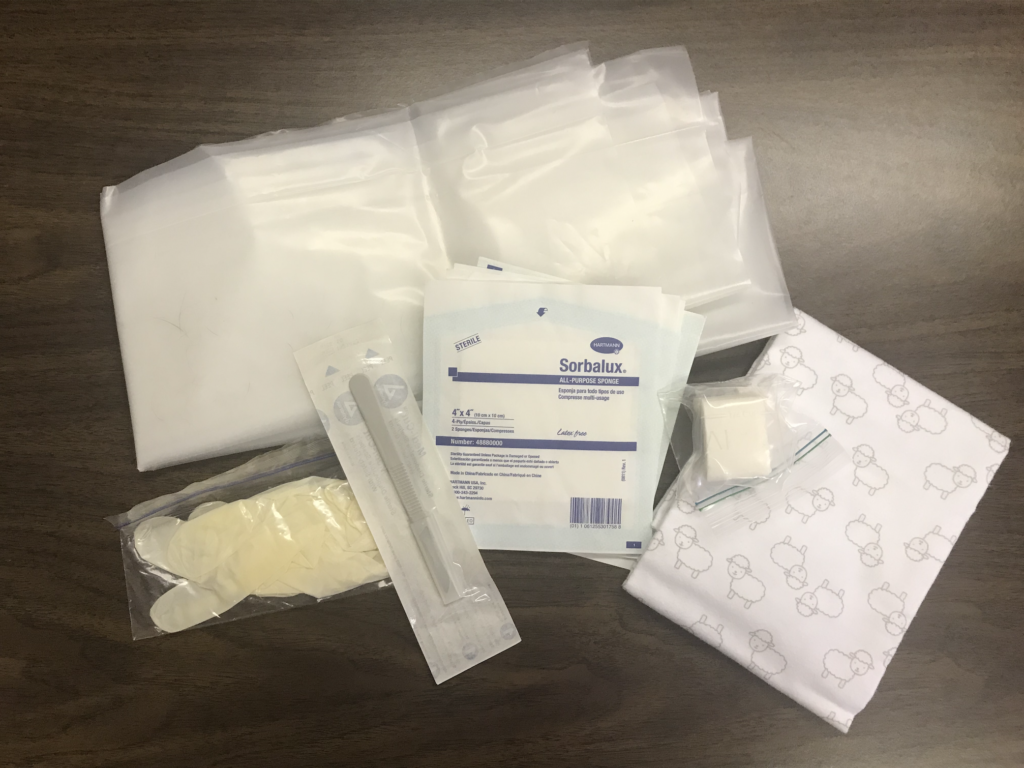
Additionally, you can send two flannelette receiving blankets, each 1 yard/meter square. You can purchase these (example) already made or purchase fabric and cut it with pinking shears to prevent fraying. If using blankets that are thin or not bound please include one bound and one not bound in each kit. One is used to dry and stimulate the baby, and one to swaddle the baby—even in hot climates, babies quickly lose body heat.
If you live near Winston-Salem, you can collect items and drop them off at our office in Cedarhyrst. If you live in other areas, please contact us at julie.unitywomen@gmail.com or call 336-422-6810, and we will tell you whether a similar effort is being made in your area.
